COVER STORY:Activities
Revisiting Society and Industry on Basis of Information and Control
With its long history of supplying information and control systems that support electricity, railways, water and sewage, and the other infrastructure of society, Hitachi is combining DX with the domain knowledge acquired from this practical experience as it seeks to help resolve the many challenges facing society while also providing the public with a comfortable and convenient way of life. What form should future information and control systems take given the rapid advances in digital technologies for the IoT, AI, and robotics? Hitachi Review spoke with five key people about their current activities, including what they see as the problems facing each domain, the challenges to be addressed and what to do about them, and the outlook for the future.
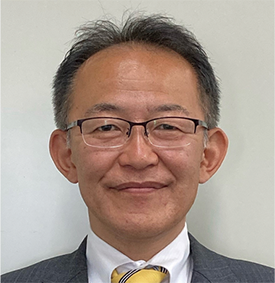 Masao Tada
Masao Tada
General Manager, Energy Solution Division, Control System Platform Division, Services & Platforms Business Unit, Hitachi, Ltd.
Joined Hitachi, Ltd. in 1992. Following roles such as project manager for development of large information systems for the electricity industry, including electricity billing systems and smart meter management systems, he took up his current appointment in April 2020.
Member of the Society of Project Management.
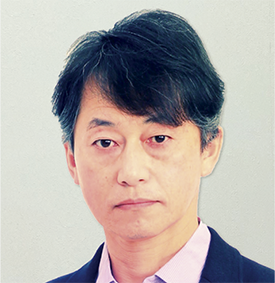 Susumu Hasegawa
Susumu Hasegawa
General Manager, Transportation Control Systems Division, Control System Platform Division, Services & Platforms Business Unit, Hitachi, Ltd.
Joined Hitachi, Ltd. in 1992. Following positions as a Senior Manager of Transportation Control Systems Engineering Department at Transportation Control Systems Division and serving as Executive Chairman of Hitachi Information Control Systems Europe, he is currently engaged in the management of railway information and control systems.
Member of the Information Processing Society of Japan.
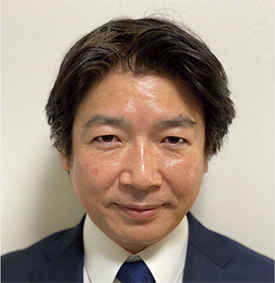 Akitoshi Shimura
Akitoshi Shimura
Senior Strategist, Strategy Planning Center, Technology Strategy Office, Research & Development Group, Hitachi, Ltd.
Joined Hitachi, Ltd. in 2000. Following roles such as a Senior Manager of the department responsible for system architecture research for social infrastructure, he is currently engaged in formulating research strategy for the Research & Development Group.
Doctor of Engineering. Member of the Society of Instrument and Control Engineers.
OchiAlong with its work on addressing the societal challenges posed by the environment, safety and security, and resilience, as encapsulated in the Sustainable Development Goals (SDGs), Hitachi has been expanding its operations globally over recent years. With decarbonization being one such issue that calls for concerted global action, could you first speak about what Hitachi is doing in the electricity and energy sectors to create a low-carbon society?
TadaJapan is among those nations that have set a challenging target of reaching net-zero emissions of greenhouse gases by 2050. Along with accelerating fresh innovation while also having stakeholders come together to pool their knowledge on the sort of specific measures for achieving this that should be adopted if we are to overcome the various challenges posed, we also need to be considering strategies for establishing economic and environmental “eco-cycles.” At the same time as the structure of energy consumption is being transformed by developments such as the digitalization of office work and the electrification of mobility and industrial equipment, the electric power system that underpins our way of life is also entering a period of major change, with the decentralization of electricity generation being one example.
The Control System Platform Division where I work develops mission-critical systems, what we call operational technology (OT) systems, that include monitoring and control systems for power grids as well as other electrical protection and control systems. Recent years have seen a rise in the number of systems that utilize digital technology and feature tight integration of IT and OT. These include the application of artificial intelligence (AI) to things like assessing equipment degradation, the analysis of data from smart meters and other sensors for the purpose of grid stabilization, and operational coordination with electricity trading systems or balancing groups.
To this end, we are adopting a consolidated approach to organizational management along with the teams responsible for developing energy industry IT systems, including by establishing joint projects guided by our vision for “green by digital.” The future will bring electric power platforms in which resources such as electric vehicles (EVs) and batteries play a major role, also electricity consumers with their own distributed generation, aggregators, service providers, and all sorts of other businesses. I see this as a future in which Hitachi will be able to show its strengths, with IT, OT, and a wide variety of products.
OchiI understand you have a lot of work going on in the energy sector, including outside Japan?
TadaThat’s right. The recent past has seen us involved in demonstration projects run by the New Energy and Industrial Technology Development Organization (NEDO) in Slovenia, Poland, and Thailand.
In Slovenia, we are working on a smart grid initiative in partnership with the national transmission system operator. The project is proceeding in two phases. The first phase successfully achieved targets that included maintaining voltage control and minimizing demand peaks. This was achieved through the implementation of a distribution management system (DMS) that provides the transmission system operator with advanced functions using an integrated cloud system for grid control, addressing issues such as long power outages and the need to supply large amounts of electricity generated from renewable sources across aging infrastructure.
Recognizing the need for greater resilience highlighted by the damage suffered in 2014 when a vicious cold snap caused major power outages, the second phase involves plans to develop a cloud-based energy management system and to trial ancillary services, measures for mitigating voltage dips, and use of the actual grid to test islanding (autonomous operation during grid failure). In July 2020, the project was the winner of the 6th ISGAN Award of Excellence (2020), an accolade that recognizes excellence in smart grid activities around the world.
In Thailand, the grid connects a wide variety of generation sources, but current operating practices do not offer any means of optimizing voltages. This makes it difficult to combine the reliable supply of electric power with minimization of transmission losses. In response, we have embarked on a demonstration project that seeks to reduce emissions of greenhouse gases by developing an online optimal control system for voltage and reactive power that will allow the Electricity Generating Authority of Thailand (EGAT) to operate its transmission system more effectively and efficiently. The project also includes plans to quantify the reduction in emissions of greenhouse gases by means of the Japanese government’s Joint Crediting Mechanism (JCM) for bilateral offset crediting.
OchiSpeaking of global operations, Hitachi last year acquired the power grid operations of the Swiss company ABB Ltd.
TadaThings like relationship building went smoothly as we had already been working together over the past few years as business partners. We have established a number of joint working groups with the newly established company, Hitachi ABB Power Grids Ltd, where along with vigorous debate on topics such as decarbonization we are also looking into combining Hitachi technologies that have already been used in overseas demonstration projects with their world-class grid automation solutions for global deployment.
OchiThe Hitachi Group as a whole also announced its specific strategies for Hitachi Carbon Neutrality 2030 plan in February 2021.
TadaWhile achieving this objective of carbon neutrality in our business operations (factories and offices) by 2030 will be no easy task, through the adoption of digital transformation (DX) and other such methods, my hope is that we will also be able to contribute more widely to society by bundling together best practices and new technologies and offering them in the form of solutions.
Many People Participated in the Slovenia Demonstration Project

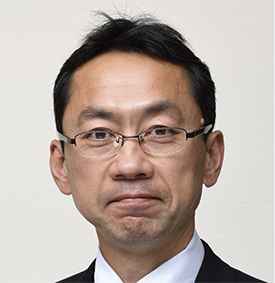 Tatsuto Sugiura
Tatsuto Sugiura
General Manager, Water, Metal and Industrial Control Systems Division, Control System Platform Division, Services & Platforms Business Unit, Hitachi, Ltd.
Joined Hitachi, Ltd. in 1994. Following roles that included the design of monitoring and control systems for the nuclear power industry and involvement in new business incubation, he is currently engaged in the design of monitoring and control systems for the water and steel industries.
Member of the Atomic Energy Society of Japan.
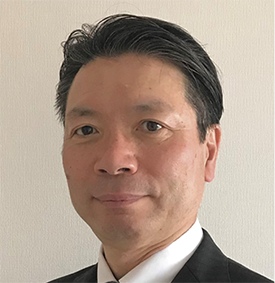 Naohiko Irie
Naohiko Irie
Senior Strategist, Control System Platform Division, Services & Platforms Business Unit, Hitachi, Ltd.
Joined Hitachi, Ltd. in 1990. He worked on the research and development of computer architectures and system-on-a-chip (SoC) architectures at the Central Research Laboratory. After transferring to the Control System Platform Division, he was involved in directing the development of information and control platforms and is currently engaged in new business development and the formulation of strategy for next-generation platforms.
Doctor of Engineering. Member of the Information Processing Society of Japan.
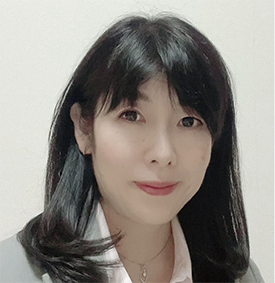 Naoko Ochi (Moderator)
Naoko Ochi (Moderator)
Manager, Business Planning Department, Strategic Planning Division, Control System Platform Division, Services & Platforms Business Unit, Hitachi, Ltd.
Joined Hitachi, Ltd. in 1993. She is currently engaged in public relations and promotion for the Control System Platform Division.
OchiAlong with the energy and electricity sectors, railways also have an important role to play in terms of energy efficiency. Their use as public transportation by large numbers of people leads to lower carbon dioxide (CO2) emissions across the transportation system as a whole. Moreover, the punctuality and convenience of Japanese trains are recognized as being world class.
HasegawaIn our role as a supplier, it seems to me that the way in which we can help society decarbonize is by enabling trains to run as efficiently as possible. In this respect, railway traffic management systems have an important part to play.
This involves keeping trains running on time by sending control requests to the signals and other safety equipment based on the scheduled timetable. Furthermore, providing functionality for replanning train timetables to recover from service disruptions caused by weather conditions or by incidents involving people or vehicles is now an essential requirement for railway operations. Among the major features of Hitachi’s traffic management systems are the ability to predict how a situation will evolve given the current operational status of trains and to present this in real time as a “train graph” (operating schedule), and functionality for suggesting to the network controllers how best to resolve conflicts on timetables in order to recover from service disruption. This can be described as AI in the broad sense of making decisions in place of people and the technology has proven itself in numerous applications since it was first implemented 25 years ago on the Hakodate Main Line. Over recent years, we have succeeded in developing new techniques that combine past practices with machine learning and have plans for a demonstration project to trial functions for automatic timetable replanning.
OchiReports from the motoring world indicate that autonomous driving is not far off. Is this true also in railways?
HasegawaThe installation of new signaling systems such as the European Train Control System (ETCS) has drawn attention to autonomous driving technology and for operating trains efficiently. In 2016, Hitachi acquired Ansaldo STS S.p.A, a global supplier of signaling and railway traffic management systems. Hitachi’s highly intelligent traffic management systems were a focus of attention during discussions with them on global market strategy. The technology got a positive reception when demonstration systems were put together using their customer data, and this led to our winning a contract for a traffic management system in Brisbane, Australia. Our aim is to grow in global markets by combining Hitachi traffic management systems with STS products. Equipping systems with AI functions and generating optimal operating schedules dynamically has potential applications in areas like on-demand scheduling and the control of railway service operations to reduce peak electricity use and we see this as a key technology for global deployment.
OchiIn the social infrastructure business, safety and security considerations must make it difficult to be an early adopter of new technology. What have you done to get around this problem?
HasegawaWhile Hitachi had technologies for automatically re-scheduling train control order at conflict points according to train location, Hitachi reached another level of train operation with the advanced technologies for presenting the situation in a train graph 25 years ago. However, given the numerous constraints that apply, such as keeping designated headway between trains (as trains cannot be dispatched more quickly than the permitted interval) and not being able to change each departure times earlier than the published timetable even if the situation is disrupted, we first went through a process of having an AI learn the sort of traffic control practices used by experienced controllers.
OchiSo rather than simply throwing IT at the problem, it is OT expertise and knowledge built up over time that enables a high quality of operations?
IrieThat’s right. The three main functions needed in a control system are monitoring, control, and protection. Monitoring is one area in significant demand right now. Along with the sort of monitoring provided by traditional signaling, significant advances are being made in the use of AI as sensing technologies based on video and audio become more widespread. That said, thorough attention needs to be paid to safety and security considerations if this technology is to be used in social infrastructure. I see that as being the mission for those of us involved in OT systems.
OchiMeanwhile, the pandemic has brought rapid changes to society and how people live. In the context of system development, what changes do you need to consider in order to adapt to this new normal?
ShimuraWhile much has been made of this new normal since last year, it seems to me that the world had already going through major changes for a number of years, the rising severity of natural disasters being one example. For this reason, system development needs to proceed on the assumption that change will be ever-present.
This raises the problem of governance. One example is last year’s shortage of artificial respirators caused by the rising number of COVID-19 cases. Unfortunately, it proved difficult for manufacturers from other sectors to help out because the approvals process for gaining certification to manufacture medical equipment under existing rules took a minimum of several months. This led to a loosening of regulations, which happened very quickly in Europe and America and by around April, I believe, in Japan, allowing vendors from other industries to start making respirators. In other words, rules need to change quickly in response to changing requirements.
Change is especially rapid in cyberspace. While the data-driven businesses of major IT platform companies like Google, Amazon, Facebook, and Apple (GAFA) deliver benefits such as the ability to shop from home, the legal system for cyberspace has failed to keep pace. In other words, it seems to me that governance practices based on existing law have reached their limit.
OchiHow is progress on broadening and deepening that discussion?
ShimuraIn fact, it was the topic of some debate here and overseas even before the pandemic started. Hitachi’s research divisions have also been involved, with the World Economic Forum Centre for the Fourth Industrial Revolution (C4IR), for example, considering scenarios such as the widespread use of autonomous vehicles and looking at the thinking behind the associated technology governance and policy making. As Irie-san noted earlier, a particularly important issue in all this is how to ensure the reliability of the system as a whole.
A society in which change is ever-present needs to be one that functions with resilience in all areas in response to diverse needs. To this end, the three areas of innovative technology development, its practical application, and its governance need to be addressed in tandem and these considerations inform how we go about architecture development.
OchiWhat specific actions are you taking on this?
ShimuraWe are looking at an architecture that represents society in terms of three “views”: a “system view” for the operation of working systems, a “service view” for the use of innovative technology to develop and test services, and a “society view” for establishing goal-based governance while also building consensus among service stakeholders. In other words, our aim is to create a resilient society by promptly identifying changes and then developing and testing new technologies or services in response, while also being quick to establish new rules among consumers and other stakeholders where needed.
OchiWe spoke earlier about the issues with using AI. In sectors like mobility and industry, increasing use is also being made of robots for tasks such as inspection.
ShimuraYes, and as a result people have started to talk about the need to develop new rules for robotics and to revise the rules that apply at industrial sites. In mobility, for example, organizations such as the Mobility as a Service (MaaS) Alliance are debating the question of how insurance should work in a MaaS environment.
IrieThere is clearly a close relationship between robotics and rule-making. With regard to robotics in this context, we have been working with the quality assurance division to look at deployment in our business while also putting in place procedures for defining risk assessments, using them as a basis for contracts and incorporating them into system requirements.
OchiChanging the topic slightly, the low birth rate and aging demographics have become a problem for skills transfer and it is often said that this will change how social infrastructure works in the future. As essential industries and public systems provide the foundations for people to lead a secure life, this is making the information and control systems that underpin their operation more important than ever. What is Hitachi doing in the industry sector amid this societal change?
SugiuraThe water supply and sewage industry to which my own division supplies monitoring and control systems is facing a number of challenges that come with the aging demographics and falling population. These include the transfer of skills from experienced technical staff, the maintenance of aging equipment, and constrained finances. These challenges make the question of how best to operate equipment and facilities even more important.
We supply systems that reduce the workload of operational staff by incorporating advanced control models to expand the scope of automatic control, using these to handle issues that in the past have been dealt with by experienced staff, such as fluctuations in the quality of intake water. Another example is the techniques we offer for generating optimal operating plans that incorporate daily demand prediction, covering everything from water intake to treatment and distribution. This technology and expertise can also be applied to the prediction of long-term demand for use in infrastructure planning and I expect it will play a major part in coordinating operation across different areas and systems in the context of the expected future move toward consolidation and joint operation.
OchiWhat do you have in mind when you talk about coordination among systems?
SugiuraWhat we talk about as water supply encompasses both the supply of domestic water, where water is taken from rivers or other such sources, treated, and then supplied to the area’s water distribution infrastructure, and also the task of water distribution that gets this water from these distribution hubs to consumers. These respective operations are managed by separate entities, such as the prefecture or individual municipalities. While each of these is run by its own system, coordinating the operation of these systems makes it possible to optimize the overall water supply infrastructure in ways that would not be possible from the individual systems on their own. Similarly, we are also experimenting with the high-order coordination of different types of systems, namely those for supplying electricity and water. This involves testing the use of water supply infrastructure as a form of virtual power plant (VPP), where the infrastructure serves as a buffer for electric power. Along with upgrading individual systems to ensure their safety and security, we believe this way of looking at multiple systems in terms of emergence and comprehensive optimization represents not just a means of addressing societal challenges, but also an essential element in enhancing the resilience of the infrastructure as a whole.
This system-wide perspective is also relevant to the production of products. The production of steel, for example, involves not only those control systems that operate the rolling mills and other such equipment directly, but also the integrated operation of a variety of other systems such as those at management level or those that coordinate the overall production process. Along with further enhancing individual systems through the use of AI and so on, we are also working on solving the problems faced by customers by treating systems as an integrated whole.
OchiThe information and control systems used by different business domains are built not just on OT, but also on the IT that operates the system itself. Cyber-physical systems (CPSs) use “cyber” technology for the optimal control of real-world operations. If such systems are to be put to use in mission-critical areas, I anticipate it will require the deployment of advanced IT in the form of AI, the Internet of Things (IoT), and robotics as well as the digital platforms on which information and control systems are implemented. What do you see in the future for these digital platforms used in social infrastructure control?
IrieOur information and control platforms are based on an autonomous decentralized architecture that began development in 1977, being originally modelled on that architecture found in living organisms. It has been put to use in diverse applications, including the railway and steel industries. Because it is configured in such a way that the unavailability of an individual subsystem does not impact on the system as a whole, the architecture provides high levels of expandability and reliability as well as ease of maintenance. At the Control System Platform Division, we are currently using this architecture in the development of products for a wide range of social infrastructure systems, including computers, controllers, and middleware specifically designed for control applications.
As for the future, some years ago, Professor David Teece of the University of California, Berkeley put forward the concept of “dynamic capabilities” for strategic management. He identified a need for three particular capabilities if companies and other organizations are to respond to an environment of rapid change and growing uncertainty, namely the capacity to see what is going on (sensing), to assess the situation (seizing), and to reconfigure the business accordingly (reconfiguring). I see this as pointing the way forward for future corporate DX.
I also believe that social infrastructure systems need to be equipped with these dynamic capabilities. This means that functions for facilitating and delivering dynamic capabilities are important, including sensing and AI for acquiring and seizing information, and robotics to provide the automation and autonomous operation needed for reconfiguration. To this end, we are further enhancing the autonomous decentralized architecture to provide functions for sensing, seizing, and reconfiguration and developing digital platforms on which systems can evolve dynamically.
OchiWhat sort of components go into these platforms?
IrieIndustrial edge computers are one example. Implementing sensing and control functions at the base site is important for sensing and reconfiguring at locations close to the site. We have developed products with built-in edge AI to provide advanced sensing while also meeting the requirements for such equipment, which include being robust and having a long life. We also provide support for edge orchestration, functions that involve the use of big data analytics to extract new knowledge from sensing information obtained from the cloud and put his knowledge to use in edge applications and for on-site control. This takes the form of “components” (modular products) that are well-suited to the requirement that future digital platforms allow systems to evolve.
Robotics is another key technology. As we talked about earlier, use of robotics has been growing rapidly in manufacturing and logistics and we are developing autonomous driving sensors for automating the inspection of large scale equipment as well as autonomous picking robots for the logistics industry. We intend to further upgrade our system technologies that facilitate reconfiguration, enabling autonomous robots to adapt quickly to these ever-changing needs and workplace environments.
OchiSo AI is being used on-site in edge applications. I also understand that rapid progress is being made on the integration of robotics and AI. What about in industrial control systems where reliable operation is a key requirement – how is autonomous AI being used there?
SugiuraIrie-san spoke earlier about control systems requiring the three functions of monitoring, control, and protection. We see protection functions as being particularly important in the application of AI to the control of equipment in industries such as steel. This is because outputting the wrong control signals can damage the machinery. To address this, rather than using signals from the AI directly, we provide additional equipment protection circuits between the AI and the actuators. As these protection practices are difficult to implement without a thorough understanding of the equipment and control, having a store of accumulated expertise is crucial to success.
I should also note that techniques for verifying AI outputs and the ability to explain AI decisions are among the factors that will be important in the use of AI for control.
HasegawaThe same is true in the railway industry where inappropriate operation can result if AI is left to revise schedules unsupervised. To remediate this problem, we also utilize the constraint logic that we used in the past. That is, the system is equipped with the ability to automatically instruct AI when it generates an invalid solution.
OchiThe existence of protection circuits and practices is what allows this technology to be used in social infrastructure. This is another area where I hope Hitachi will be able to make good use of the strengths that derive from its mix of OT, IT, and products.
While we have spoken today about the current situation and future outlook for fields like energy, railways, and industry, we also need to be looking ahead to the organic interoperation of information and control systems from these different domains with a view to building more advanced social infrastructure.
IrieAmid the rising uncertainties of modern society, the sharing of data, systems, and knowledge across different industries will, I believe, be essential if Hitachi is to deliver social value in terms of the environment, resilience, and safety and security. By drawing on our strengths that derive from our working with such a wide variety of OT systems, I hope that we can contribute to a new generation of digital platforms suitable for mission-critical applications.
OchiThank you all for participating in this lively discussion.